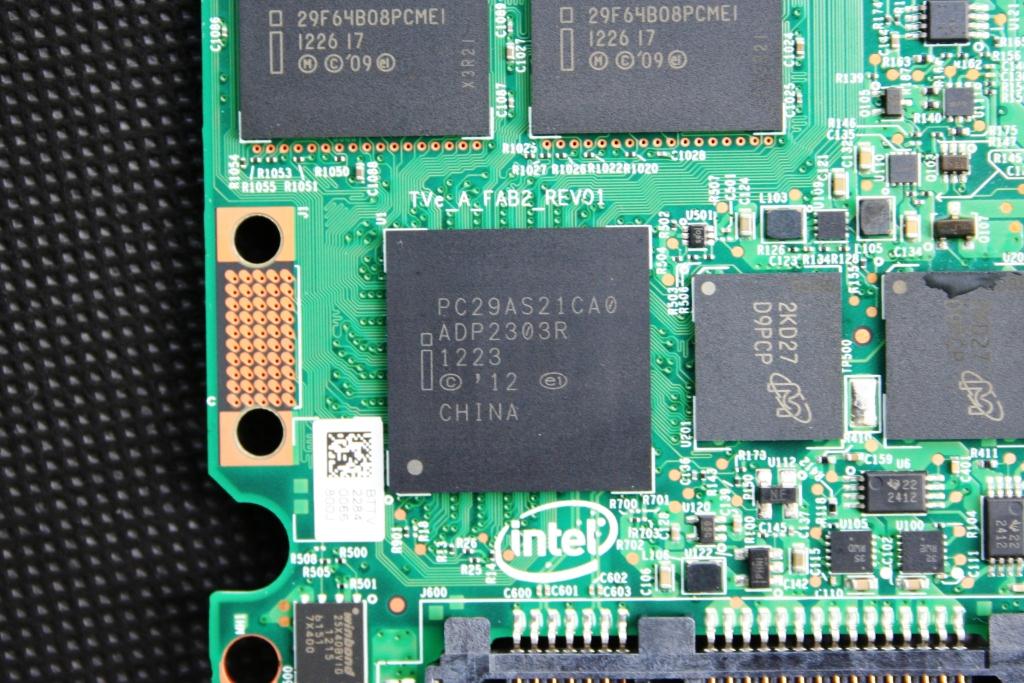Intel’s HET-MLC is still based on a 25nm lithography. Typically, consumer-grade flash is the vanguard of a die shrink, with higher endurance MLC and SLC coming later once yields are better. It could be some time before the first 20nm flash gets packaged as HET-MLC, so Intel is sticking with the 25nm stuff used on the 710 and 910 PCIe models. The good news is, building around a mature process helps keep costs lower; the S3700 will sell for around $2.35/GB. There are still a few higher-end consumer drives selling for that, so it has to be considered an aggressive price point for a drive capable of 10 DWPD.
Undoubtedly, the most significant change over previous SSDs bearing the Intel name is the controller. Setting aside the familiar 10-channel architecture for an 8-channel ASIC, the new silicon is a fresh 6gbps capable unit. There are significant new features, like support for DDR3 DRAM and end-to-end data protection, but some old features (power-loss-protection and AES encryption, for instance) are included As well. The new data safeguard is courtesy of Cyclic Redundancy Checks, which are performed at every stage. Throughout the drive, including the DRAM and the controller’s onboard SRAM, CRC checks are made to ensure nothing unexpected happens to data in transit.

As much as storage junkies everywhere might be waiting for a modern, all-Intel consumer drive, the new controller is currently destined solely for enterprise duty. That could change, but the controller and firmware combo underpinning the S3700 were purportedly designed top-to-bottom for enterprise needs, and wont necessarily serve the consumer and client market quite as well. Mainstream consumer drives will continue to use third party silicon for some time to come.
Intels partnership with Marvell may have been short-lived, but their client-side SandForce partnership seems to be holding its own.. Even if Intel decides to dump the resources into creating their own SATA III platform for the consumer market, a lot of validation and ground work has already gone into current ‘SandForce Driven’ Intel offerings. Dumping LSI SandForce at this point means throwing away a lot of time, money, and effort just to turn around and throw good money after bad. It becomes a matter of priorities and resources, and right now there doesn’t seem to be much desire on Intel’s part to expend the effort. On the other hand, we’ve been surprised before.
 The SSD Review The Worlds Dedicated SSD Education and Review Resource |
The SSD Review The Worlds Dedicated SSD Education and Review Resource | 

Awesome product again, but price is very strange its equal to capacity i mean 2x100GB is exactly the same as 1x200GB and so on. For enterprise server more capacity is logical (save power & room), but for mid range servers its a kill – deal to buy smaller drives price/performance it will be a lot more then awesome.
Are you still using IOMeter to generate you test data? Also, are you testing the drive raw, or with a logical file system? Great review!!
On page 5, it’s described that this SSD uses deduplication.. is it right? Because I don’t find Intel has mentioned it elsewhere.. thanks for the great review.